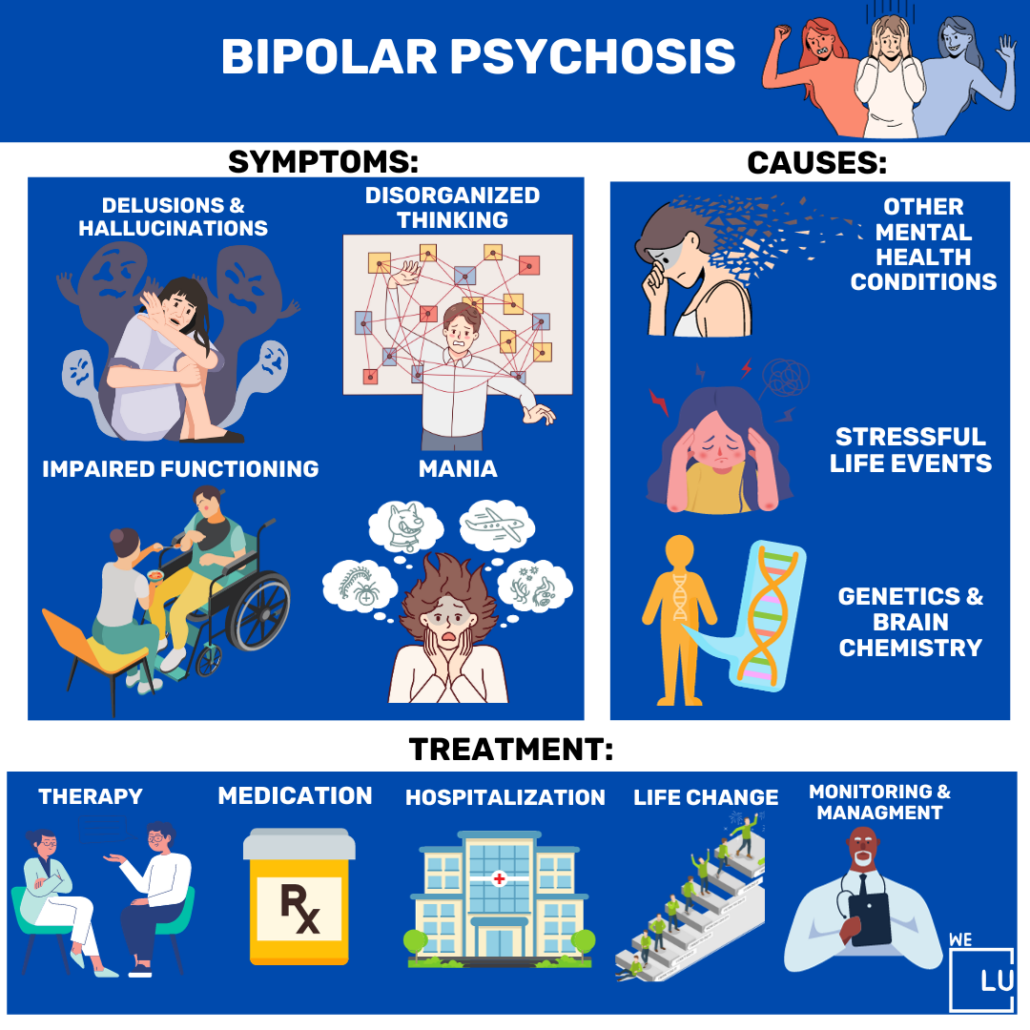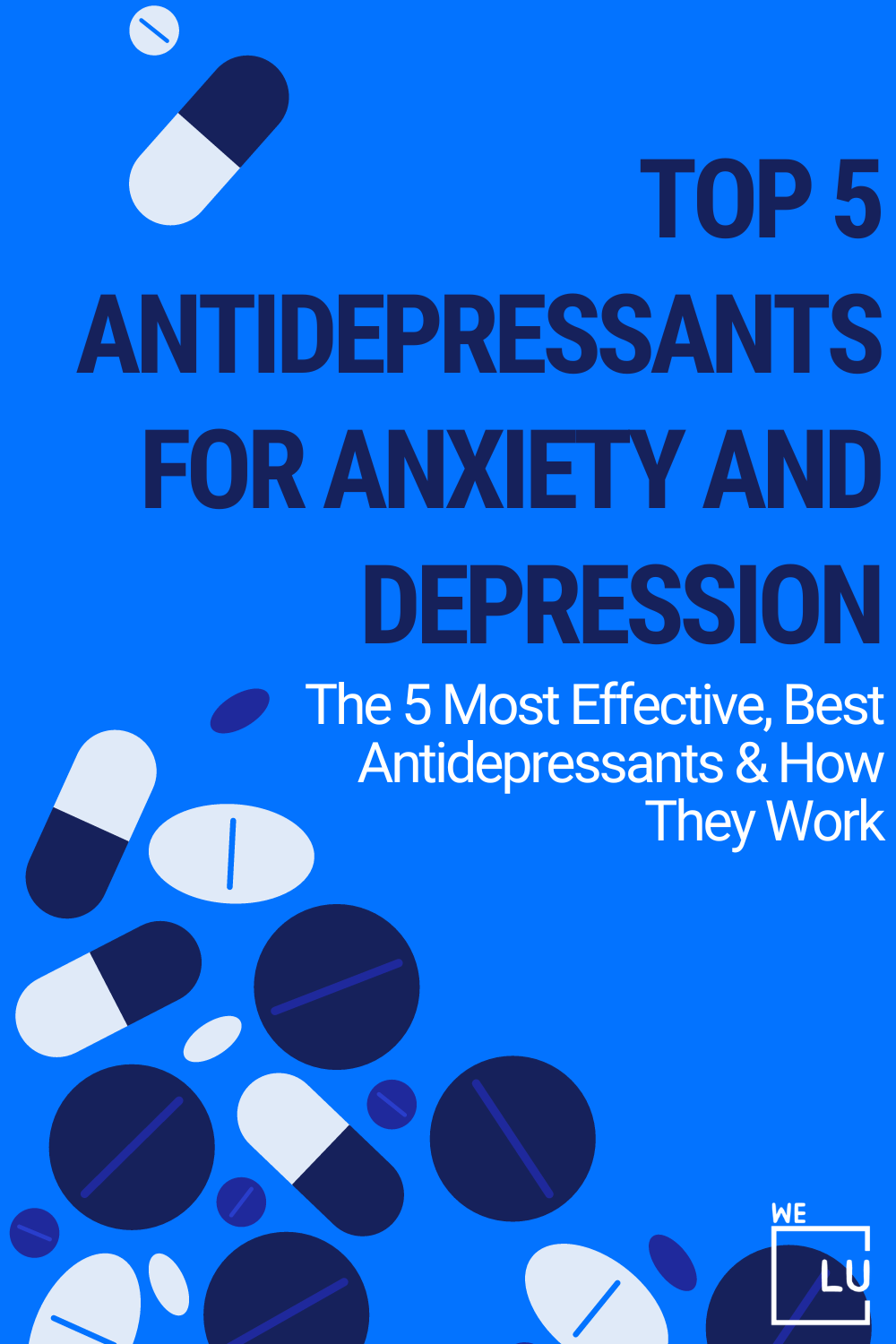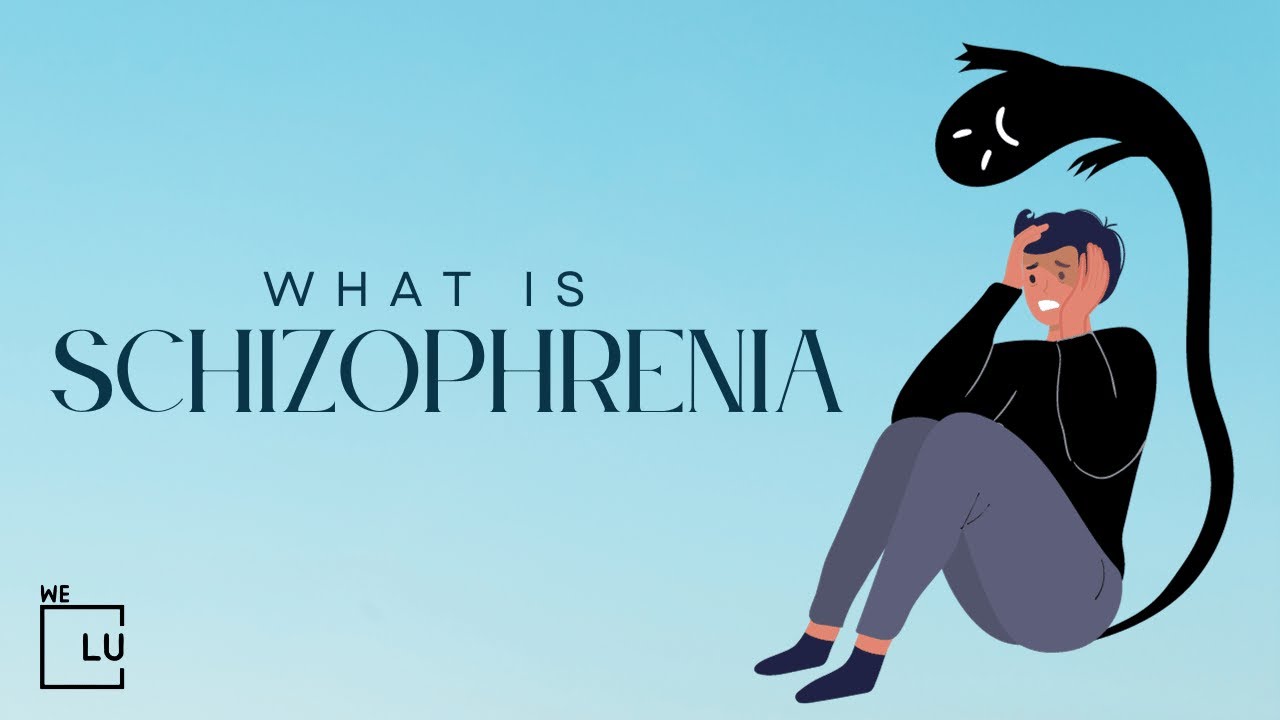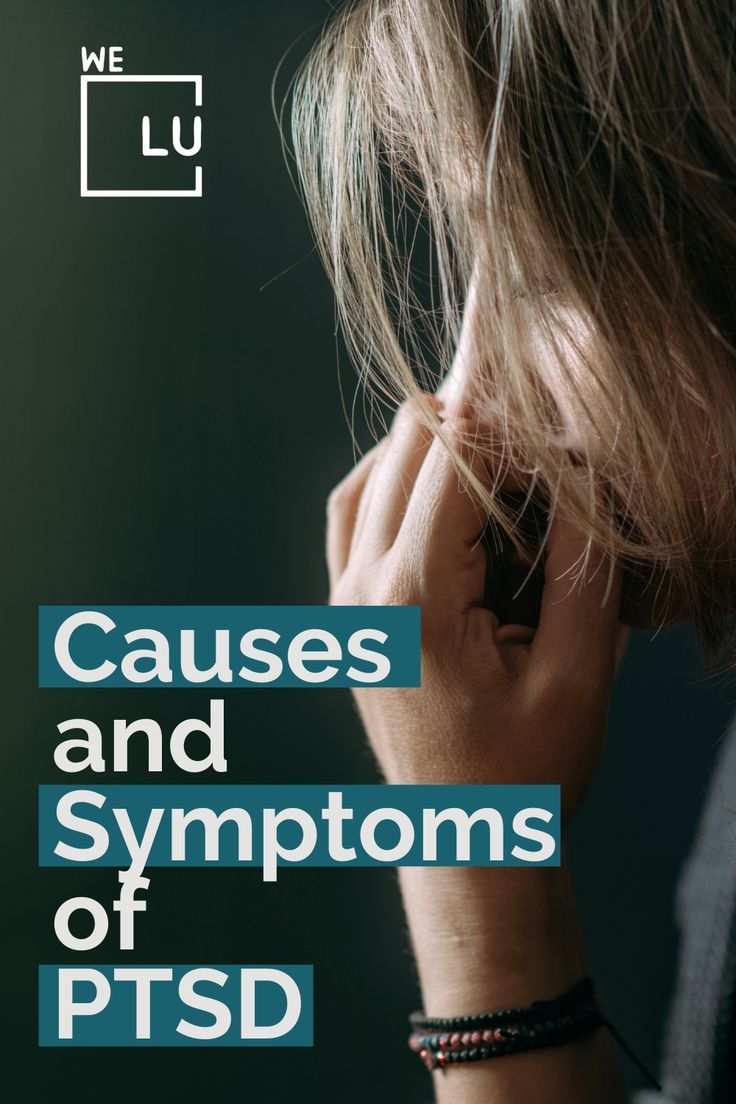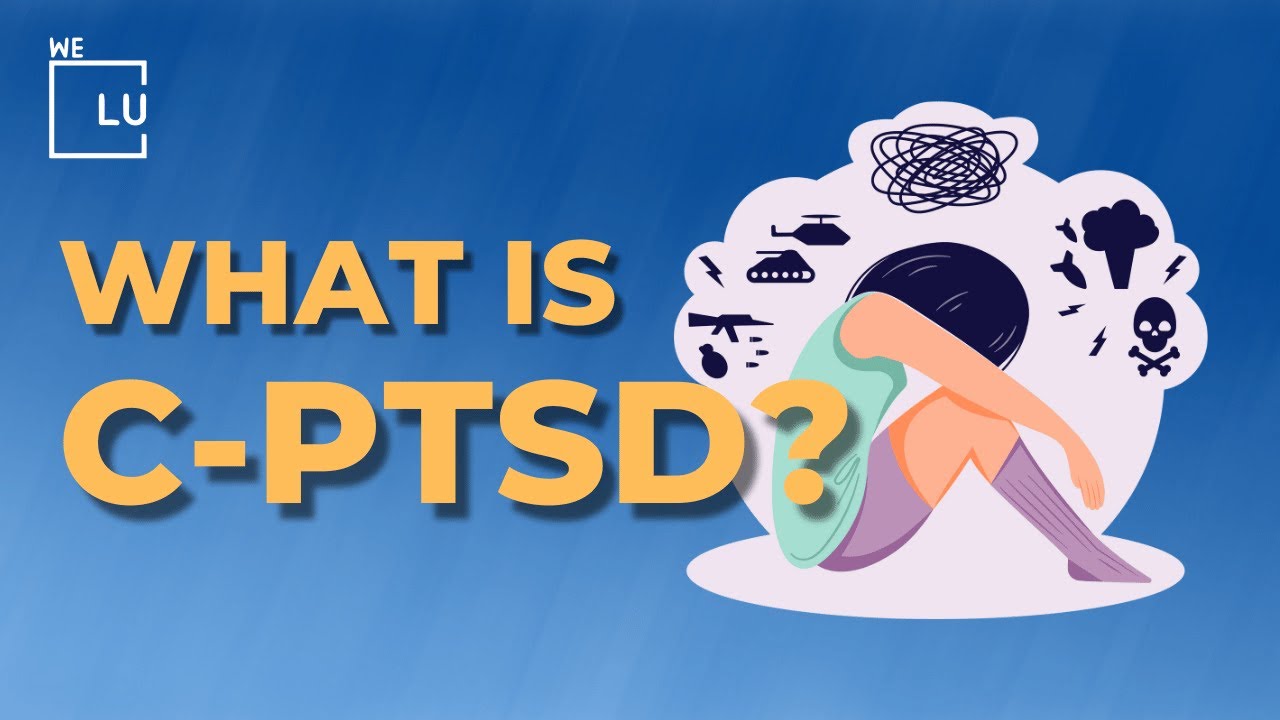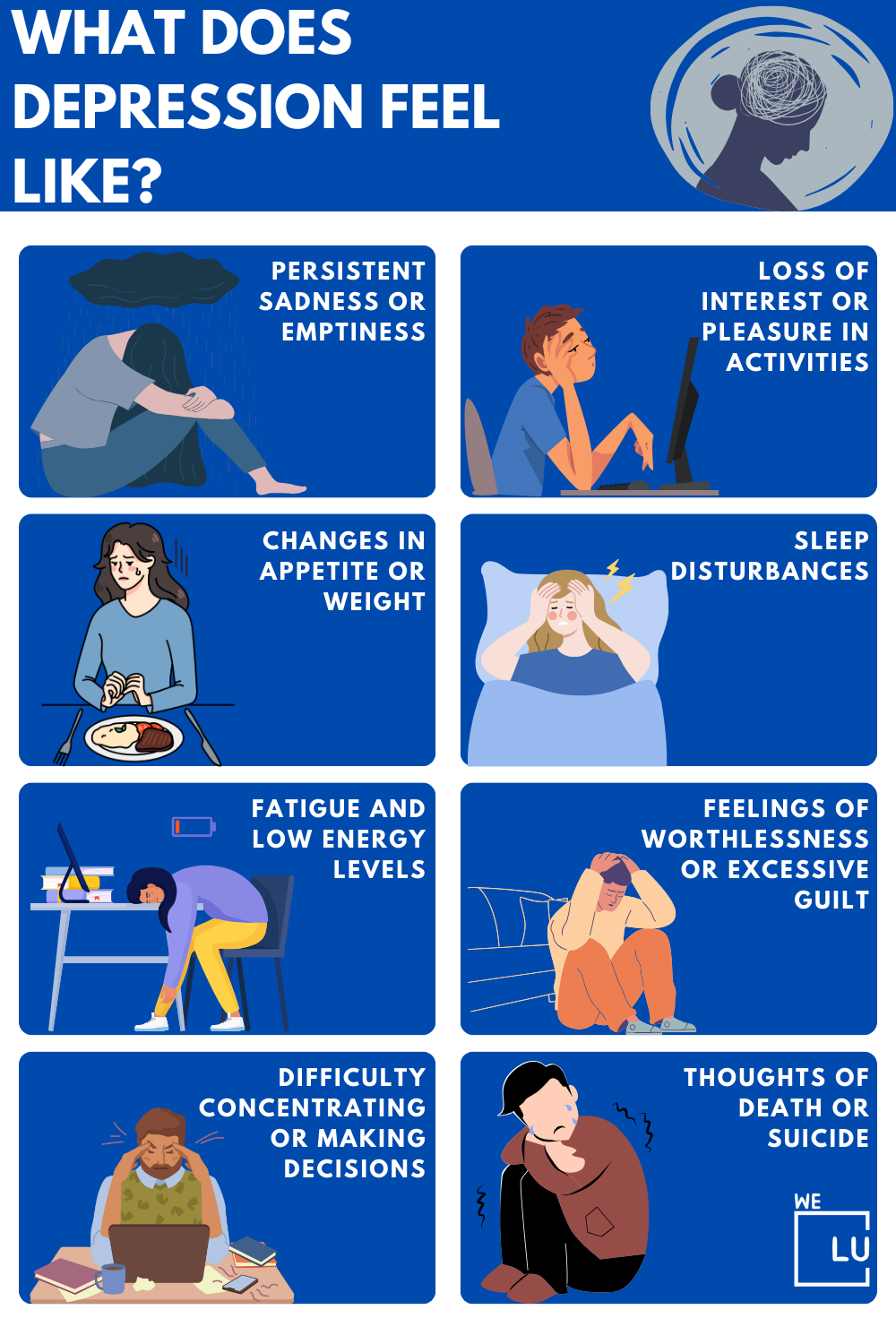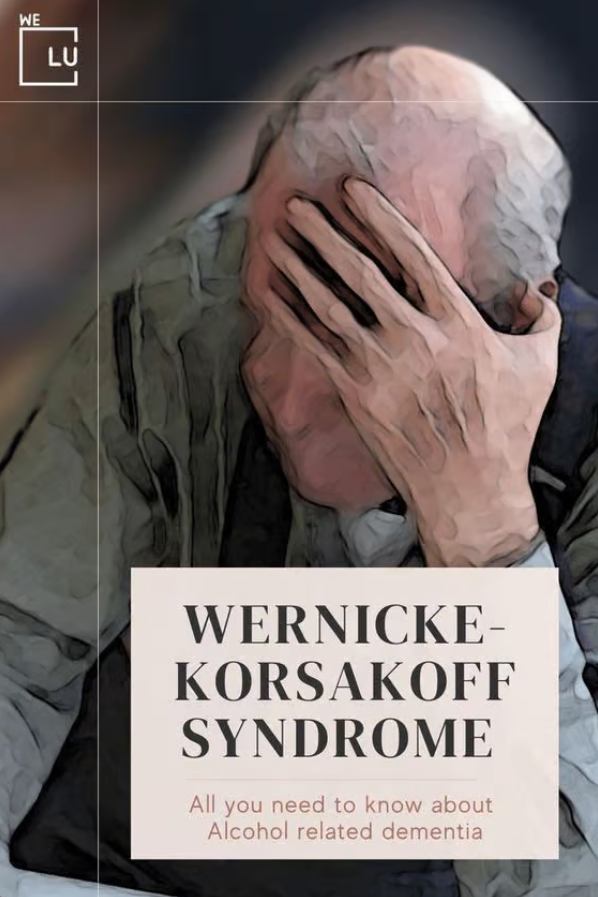Guide to How a Person With Bipolar Thinks
Bipolar disorder, once known as manic-depressive illness, is a mental condition causing unusual changes in mood, concentration, and energy. These fluctuations make everyday tasks challenging.
There are three types of bipolar disorder, each involving noticeable shifts in mood and energy levels. Cognitive issues impacting thinking are common in people with bipolar disorder, affecting organizational functioning.
Individuals with bipolar disorder show distinctive thought patterns, yet with appropriate treatment, they can effectively navigate and cultivate fulfilling, well-balanced lives. So, how does a person with bipolar think?
Understanding Bipolar Disorder
Bipolar disorder is a mental health condition characterized by extreme mood swings involving episodes of mania and depression. These mood fluctuations can significantly impact daily life, relationships, and overall functioning.
Bipolar I Disorder
Hospitalization is more frequently required for individuals with Bipolar I compared to those with other forms of the disorder. It involves manic episodes lasting at least seven days or severe enough to require immediate hospitalization. Depressive episodes often accompany these manic episodes.
How a Person With Bipolar 2 Thinks?
Bipolar 2 is characterized by a pattern of depressive episodes and hypomanic episodes, which are less severe than full-blown manic episodes but still noticeable and impactful.
Cyclothymic (Cyclothymia) Disorder
A milder form of bipolar disorder involving numerous periods of hypomanic and depressive symptoms lasting for at least two years (one year in children and adolescents).
Understanding these distinctions is crucial for understanding how a person with bipolar thinks, accurate diagnosis, and appropriate treatment approaches for individuals with bipolar disorder.
How a Bipolar Person Thinks?
Myths fuel misunderstandings and stigma about bipolar disorder. People wrongly think those with bipolar disorder always have extreme moods, but they have stable periods.
There’s a misconception that constant creativity comes with bipolar disorder, ignoring its variability. Some believe everyone with bipolar disorder is always unhappy, but many lead fulfilling lives with proper management. The myth that individuals with bipolar disorder can’t function is untrue; with the appropriate treatment and support, many lead productive lives.
Facts:
- Fluctuating Moods: Bipolar individuals experience extreme mood swings, cycling between manic and depressive episodes.
- Creativity: Some may experience heightened creativity during manic phases, contributing to bursts of productivity and innovation.
- Racing Thoughts: Manic episodes may involve a rapid flow of thoughts, making concentration challenging.
- Depressive Rumination: During depressive phases, individuals may engage in prolonged and negative thought patterns.
- Varied Cognitive Abilities: Cognitive abilities can vary, with periods of sharp focus and creativity alternating with periods of decreased concentration.
Fiction:
- Consistent Extreme States: Not every moment is dominated by extreme moods; individuals experience periods of stability.
- Constant Creativity: While some may have bursts of creativity, not all bipolar individuals are continuously creative.
- One-Size-Fits-All Thinking: Each person’s experience with bipolar disorder is unique; thinking patterns vary widely.
- Perpetual Unhappiness: Bipolar individuals can experience happiness and lead fulfilling lives with effective management.
- Inability to Function: With proper treatment, many individuals with bipolar disorder can lead functional and productive lives.
Understanding the nuances of how a bipolar person thinks involves recognizing factual aspects and dispelling common misconceptions about their cognitive processes.
What are the Symptoms of Bipolar Disorder?
The symptoms of bipolar disorder can be categorized into manic and depressive phases.
Manic Symptoms:
- Elevated Mood: Feeling excessively happy, energetic, or irritable.
- Increased Activity: Engaging in impulsive or high-risk behaviors.
- Rapid Speech: Talking quickly and uncontrollably.
- Decreased Need for Sleep: Feeling rested with less sleep than usual.
- Racing Thoughts: Having a flurry of thoughts and ideas.
Depressive Symptoms:
- Persistent Sadness: Feeling consistently down or hopeless.
- Fatigue: Experiencing low energy levels and tiredness.
- Changes in Sleep: Insomnia or oversleeping.
- Loss of Interest: Diminished interest or pleasure in activities.
- Difficulty Concentrating: Impaired focus and decision-making abilities.
The severity and duration of these symptoms can vary, and a comprehensive evaluation by a healthcare professional is necessary for an accurate diagnosis and appropriate treatment.
What Causes Bipolar Disorder?
The exact cause of bipolar disorder is not fully understood, but it is believed to result from a combination of genetic, biological, and environmental factors.
- Genetic: Individuals with a family history of bipolar disorder are at a higher risk.
- Biological Factor: Imbalances in neurotransmitters, the brain’s chemical messengers, are also thought to contribute.
- Environmental Causes: Stressful life events, trauma, or significant life changes may trigger the onset of bipolar episodes in genetically susceptible individuals.
Overall, the interplay of these factors is complex, and ongoing research aims to deepen our understanding of the root causes of bipolar disorder.
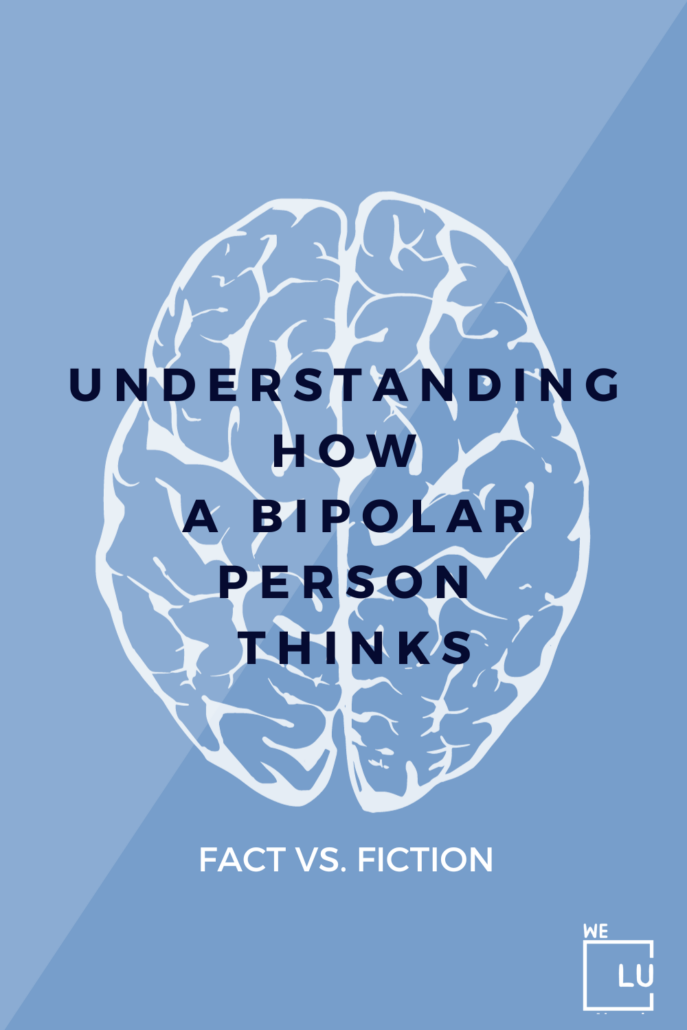
Skip To:
Learn More:
- What is Bipolar Psychosis? Learn More About Bipolar with Psychosis Symptoms, Cause, and Treatment
- Guide to Bipolar Mixed Episode. Understanding Bipolar Mixed Episode Symptoms, Causes, and Treatments
- Bipolar Disorder Therapies. Different Types of Effective Therapy for Bipolar Disorder
- Understanding Rapid Cycling Bipolar Disorder
- Bipolar Symptoms In Women. Signs, Symptoms and Tips
- Bipolar with Psychotic Features and Bipolar 1 With Psychotic Features, Causes, Types, Symptoms and Treatment
- Is Bipolar a Disability? Can You Get Disability For Bipolar Disorder? 5 Tips, Eligibility, and How to Claim Disability
- Difference Between Bipolar 1 and 2, Bipolar 1 Vs 2 Symptoms, Diagnosis, and Treatment
- Is Bipolar a Personality Disorder? BPD vs. Bipolar
- Arguing with a Bipolar Person, 10 Tips for Effective Communication and How To Deal With Bipolar People
Get bipolar counseling that works to understand better how a person with bipolar thinks. Discover professional help from We Level Up Florida’s mental health therapists. Start getting support with a free call to our mental health hotline.
Get Help. Get Better. Get Your Life Back.
Searching for Accredited Dual Diagnosis Mental Health Centers Near You?
Even if therapy failed previously, or are in the middle of a difficult crisis, we stand ready to support you. Our trusted behavioral health specialists will not give up on you. When you feel ready or just want someone to speak to about counseling alternatives to change your life call us. Even if we cannot assist you, we will lead you to wherever you can get support. There is no obligation. Call our hotline today.
FREE 24/7 Dual Diagnosis Mental Health Services HotlineHow to Handle Your Bipolar Symptoms and Thoughts?
To cope with bipolar symptoms, establish a consistent routine and prioritize sleep. Regular exercise, a balanced diet, and sufficient sleep contribute to overall well-being and can positively impact mood. Also, understanding how a person with bipolar thinks can help you recognize mood patterns and potential triggers and enhance self-awareness.
Seeking professional help, such as cognitive-behavioral therapy, addresses distorted thought patterns, while medication management stabilizes mood swings. Building a solid support system with friends, family, or support groups provides understanding and assistance during challenging times.
Combining these lifestyle adjustments, therapy, and medication creates a comprehensive strategy for coping with bipolar symptoms.
Bipolar Disorder Therapy
Bipolar disorder therapy includes different approaches designed to address its complex nature. Cognitive-behavioral therapy (CBT) identifies and changes negative thoughts, while dialectical behavior therapy (DBT) combines techniques with mindfulness for emotional control.
Interpersonal and social rhythm therapy (IPSRT) stabilizes mood through routine, and family-focused therapy (FFT) involves the family for better support. Also, psychoeducation provides crucial knowledge about bipolar disorder, and mindfulness-based cognitive therapy (MBCT) integrates mindfulness to prevent relapses.
Supportive treatment offers a safe place for emotional expression and helps people understand how a person with bipolar thinks. Customizing these options to individual needs ensures a comprehensive and practical approach to managing bipolar disorder.
Bipolar Disorder Medication
Medications are in managing bipolar disorder, aiming to stabilize mood fluctuations. Common medications include mood stabilizers such as lithium, which helps prevent both manic and depressive episodes.
Anticonvulsant prescriptions like valproic acid and lamotrigine are also used to stabilize mood. Atypical antipsychotics such as olanzapine and quetiapine may be prescribed to address symptoms during manic or depressive episodes. In some cases, antidepressants may be included cautiously, often in combination with mood stabilizers.
The specific medication regimen is determined by the individual’s symptoms, medical history, and response to treatment, and it’s essential to work closely with a healthcare professional to find the most effective and well-tolerated medication plan.
Do you have questions about how a person with bipolar thinks or treatment in general? Call We Level Up FL helpline 24/7.

End the Emotional Pain. Get Your Life Back.
Feeling Depressed, Anxious or Struggling with Mental Health Illness? Get Safe Comfortable Mental Health Dual Diagnosis High-Quality Therapy From Counselors That Care. Begin Your Recovery Now.
Hotline (855) 940-6125What Does it Feel Like During a Mental Stability or Bipolar Recovery?
Bipolar disorder usually requires continuous treatment throughout a person’s life, as symptoms may vary over time and don’t resolve on their own.
During mental stability or bipolar recovery, individuals often experience a sense of balance and emotional calmness. The extreme mood swings characteristic of bipolar disorder tend to subside, leading to a more consistent and steady emotional state. Improved clarity of thought, enhanced decision-making abilities, and an overall feeling of well-being mark this period.
Individuals may find it easier to engage in daily activities, maintain relationships, and pursue personal goals during this phase. Moreover, mental stability and bipolar recovery often bring a sense of relief and hope. It’s a time when individuals can focus on building coping strategies, implementing self-care practices, and fostering a supportive environment.
While challenges may still arise, the frequency and intensity of mood episodes are reduced, allowing individuals to lead a more fulfilling and functional life.
We Level Up FL Mental Health Center Tips To Understand How a Person With Bipolar Thinks
✅ Understand that in different mood phases, like depression or mania, their thinking patterns may change, influencing how they process information.
✅ Prolonged shifts in behavior during these moods can make communication and interaction more challenging for individuals with bipolar disorder.
✅ To grasp how someone with bipolar disorder thinks, remember that their “mood” is more than just emotions—it affects decision-making.
✅ A formal medical diagnosis by a qualified healthcare professional is crucial for accurately identifying and addressing bipolar disorder.
How Does Bipolar Disorder Impact a Person’s Thought Processes?
When someone is in a depressed mood, their thoughts differ from someone feeling regular sadness, and similarly, a person in a manic mood thinks differently than someone simply excited or happy. These mood shifts impact brain functions, affecting decision-making and information processing.
Prolonged experiences of depression, hypomania, or mania can compromise behavior and decision-making for extended periods, making effective communication and interaction challenging for individuals with bipolar disorder.
Understanding how a person with bipolar thinks involves recognizing that a mood refers to a state of mind, not just an emotional reaction. Bipolar, being a mood disorder, alters a person’s state of mind, influencing decision-making based on rational thinking.
Common Bipolar Disorder Thought Patterns
In bipolar disorder, people often struggle with racing and uncontrollable thoughts, making it hard to concentrate. In manic phases, there’s a storm of grandiose ideas and impulsive decisions, while depressive phases bring negative self-talk and feelings of worthlessness.
Dealing with bipolar disorder involves acknowledging and actively addressing these changing thought patterns for stability. Managing it effectively requires a thorough plan, including therapies like cognitive-behavioral therapy to modify distorted thoughts and medications guided by healthcare professionals to stabilize moods.
Recognizing and tailoring interventions to the complex interplay of these thought patterns is crucial to supporting individuals with bipolar disorder on their journey to mental health and stability.
Common thought patterns associated with bipolar disorder include:
- Rapid Thoughts: Individuals may experience a fast flow of thoughts, making concentrating challenging.
- Catastrophic Thinking: During depressive phases, there may be a tendency to engage in harmful and destructive thinking, expecting the worst outcomes.
- Grandiosity: In manic phases, individuals may have inflated self-esteem and grandiose thoughts, believing in extraordinary abilities.
- Impulsivity: Manic episodes may lead to impulsive decisions and risky behaviors without considering consequences.
- Negative Self-Talk: Depressive episodes often involve harsh self-criticism and feelings of worthlessness.
- Mixed Emotions: Some individuals experience mixed episodes, with simultaneous symptoms of both mania and depression, leading to intense and conflicting thought patterns.
Addressing these thought patterns is crucial in managing the cognitive aspects of bipolar disorder and knowing how a person with bipolar thinks, emphasizing the importance of therapeutic interventions.
First-class Facilities & Amenities
World-class High-Quality Mental Health Services & Behavioral Health Substance Abuse Treatment
Rehab Centers TourRenowned Mental Health Centers. Serene Private Facilities. Inpatient Rehab Programs Vary.
Mental Health Helpline (855) 940-6125Proven recovery success experience, backed by a Team w/ History of:
15+
Years of Unified Experience
100s
5-Star Reviews Across Our Centers
10K
Recovery Successes
- Comprehensive Dual-Diagnosis Treatment
- Complimentary Family & Alumni Programs
- Coaching, Recovery & Development Events
- Comfortable Onsite Medical Detox Center
How Many People Have Bipolar Disorder?
Around 1 in 40 American adults and 1% of American teenagers have bipolar disorder, a condition with mood swings between highs and lows. Unlike some mental health issues, it affects both men and women equally. The high prevalence highlights the importance of understanding and addressing bipolar disorder, emphasizing the need for accessible mental health resources and effective interventions for people of different ages.
How To Deal With Bipolar People?
Dealing with individuals with bipolar disorder requires empathy, understanding, and supportive approaches. Here are some tips:
- Educate Yourself: Learn about bipolar disorder to understand the condition, its symptoms, and treatment options. This knowledge helps you approach the situation with empathy and reduces stigma.
- Communicate Openly: Encourage open and honest communication. Discuss how they feel, their treatment plan, and any concerns they may have. Active listening is crucial to understanding their perspective.
- Be Patient: Mood swings are a part of bipolar disorder. Be patient during both manic and depressive episodes. Please recognize that the intensity of emotions may not reflect their true feelings.
- Support Treatment: When you’re loved one worries about their mental health and thinks about “I think I’m bipolar,” encourage and support their treatment plan, which may include therapy, medication, and lifestyle adjustments. Attend appointments if appropriate and help create a stable environment.
- Establish Boundaries: While providing support, it’s essential to set boundaries. Be clear about what behaviors are acceptable, and communicate these boundaries respectfully.
- Recognize Warning Signs: Be aware of potential signs of relapse or crisis. Knowing the early signs allows for prompt intervention and support.
- Encourage Healthy Lifestyle: Promote a healthy lifestyle, including regular sleep, exercise, and a balanced diet. These factors can positively impact mood and overall well-being.
- Connect with Support Groups: Encourage the individual to join support groups where they can connect with others facing similar challenges. Support networks can provide valuable insights and understanding.
- Involve Professionals: If needed, involve mental health professionals. Family therapy or counseling can be beneficial in fostering better understanding and communication.
- Take Care of Yourself: Supporting someone with bipolar disorder can be demanding. Ensure you prioritize your well-being, seek support, and don’t hesitate to consult with mental health professionals if needed.
Every individual with bipolar disorder is unique, so adapt your approach based on their needs and preferences. If you notice signs of severe distress or potential harm, seek immediate professional assistance.
Do People With Bipolar Disorder Identify Their Condition Before a Medical Diagnosis?
In many cases, individuals with bipolar disorder may not immediately identify their condition before receiving a medical diagnosis. They may often feel, “I think Im bipolar,” but may also tell you they’re only depressed at times. The nature of the illness usually involves fluctuations in mood and energy levels, making it challenging for individuals to recognize patterns or acknowledge the need for professional evaluation.
Moreover, the stigma surrounding mental health may contribute to a reluctance in self-identifying symptoms. A formal medical diagnosis by a qualified healthcare professional is crucial for accurately identifying and addressing bipolar disorder.
To fight the stigma of bipolar disorder, it’s crucial to promote understanding of how a person with bipolar thinks and empathy in communities. Education is vital in dispelling misconceptions, and sharing personal experiences through open conversations helps humanize the condition and challenge stereotypes. Supporting mental health advocacy and initiatives creates accepting environments.
By recognizing bipolar disorder as a medical condition and highlighting empathy, we work towards breaking down stigmas and building a more compassionate and inclusive society.
Suppose you or someone you know is struggling with bipolar disorder and wanted to learn more about how a person with bipolar thinks. In that case, We Level Up Florida Mental Health Treatment Center offers personalized care with an experienced team. Start your path to better health by taking the first step toward healing. Reach out for assistance and contact We Level Up FL. Each call is free and confidential.
World-class, Accredited, 5-Star Reviewed, Effective Mental Health Dual Diagnosis Programs. Complete Integrated Inpatient Rehab with Free Post Discharge Therapy Planning.
CALL (855) 940-6125End the Emotional Pain Rollercoaster. Gain Stability & Happiness Through Recovery Treatment. Start Mental Health Counseling Today. Get Free No-obligation Guidance by Behaviroal Health Specialists Who Understand Mental Health Recovery.
We Level Up FL Mental Health Center – FREE Helpline to Consultations
Experience Transformative Recovery at the We Level Up Treatment Center.
See our authentic success stories. Get inspired. Get the help you deserve.



Start a New Life
Begin with a free call to a behavioral health treatment advisor. Learn more about our dual-diagnosis programs. The We Level Up treatment center network delivers recovery programs that vary by each treatment facility. Call to learn more.
- Personalized Care
- Caring Accountable Staff
- World-class Amenities
- Licensed & Accredited
- Renowned w/ 5-Star Reviews
We’ll Call You
Search We Level Up FL How a Person With Bipolar Thinks? Mental Health Topics & Resources
Sources
[1] Greenwood TA. Positive Traits in the Bipolar Spectrum: The Space between Madness and Genius. Mol Neuropsychiatry. 2017 Feb;2(4):198-212. Doi: 10.1159/000452416. Epub 2016 Dec 9. PMID: 28277566; PMCID: PMC5318923.
[2] Guide to How a Person With Bipolar Thinks – Ironside ML, Johnson SL, Carver CS. Identity in bipolar disorder: Self-worth and achievement. J Pers. 2020 Feb;88(1):45-58. Doi: 10.1111/jopy.12461. Epub 2019 Feb 13. PMID: 30714166; PMCID: PMC6679801.
[3] Jain A, Mitra P. Bipolar Disorder. [Updated 2023 Feb 20]. In: StatPearls [Internet]. Treasure Island (FL): StatPearls Publishing; 2023 Jan-. Available from: https://www.ncbi.nlm.nih.gov/books/NBK558998/
[4] Brieler JA, Keegan-Garrett E. Diagnosis and Treatment of Bipolar Illness in the Primary Care Office. Mo Med. 2022 May-Jun;119(3):213-218. PMID: 36035565; PMCID: PMC9324725.
[5] Geddes JR, Miklowitz DJ. Treatment of bipolar disorder. Lancet. 2013 May 11;381(9878):1672-82. Doi: 10.1016/S0140-6736(13)60857-0. PMID: 23663953; PMCID: PMC3876031.
[6] What is Bipolar Disorder? – Substance Abuse and Mental Health Services Administration (SAMHSA)
[7] Highs and lows: Understanding bipolar disorder – NIH MedlinePlus Magazine (.gov) Guide to How a Person With Bipolar Thinks
[8] Shah N, Grover S, Rao GP. Clinical Practice Guidelines for Management of Bipolar Disorder. Indian J Psychiatry. 2017 Jan;59(Suppl 1): S51-S66. Doi: 10.4103/0019-5545.196974. PMID: 28216785; PMCID: PMC5310104.
